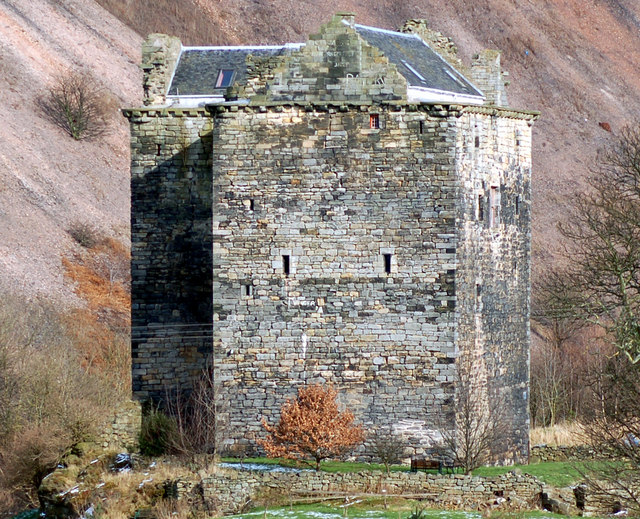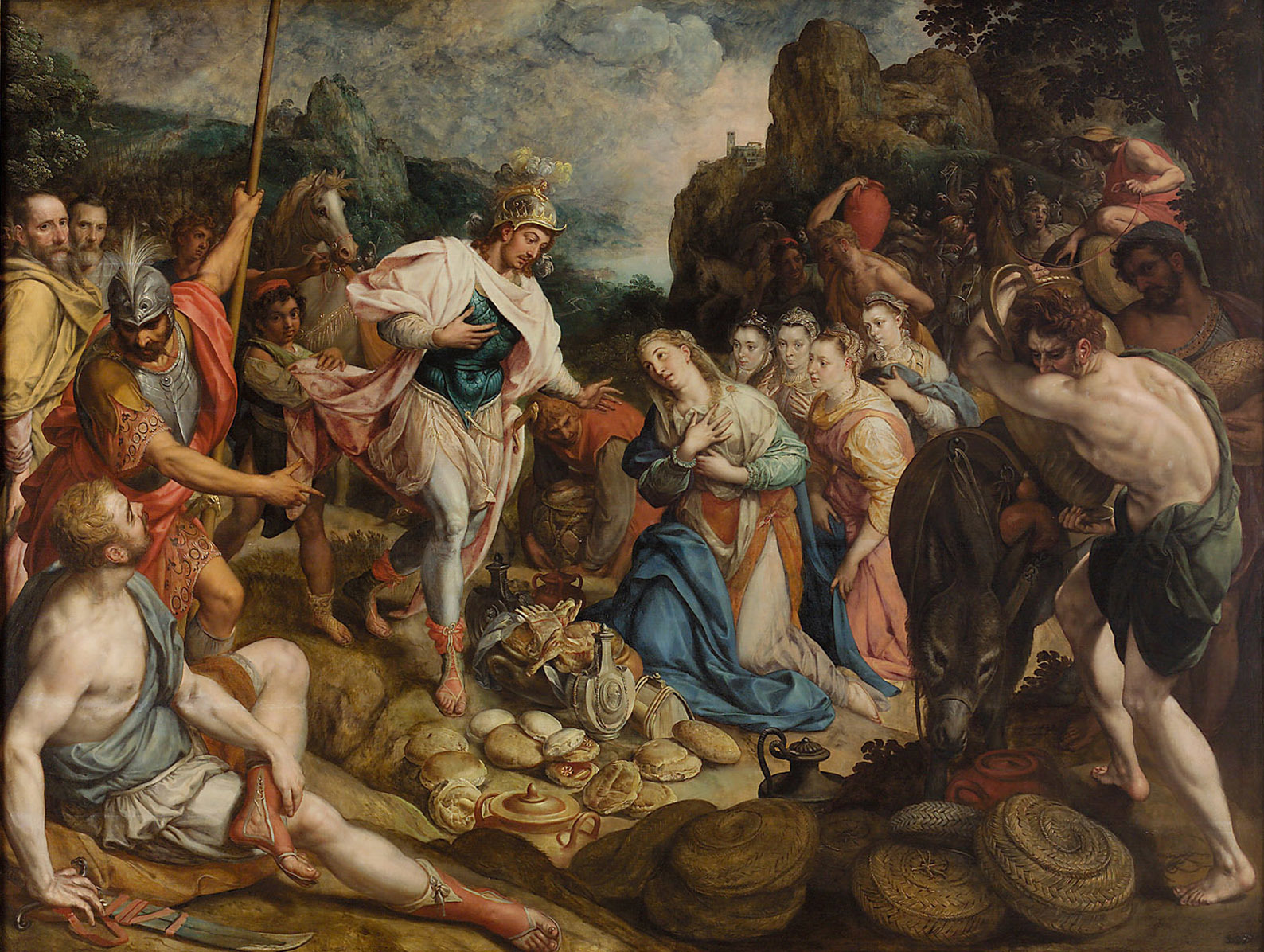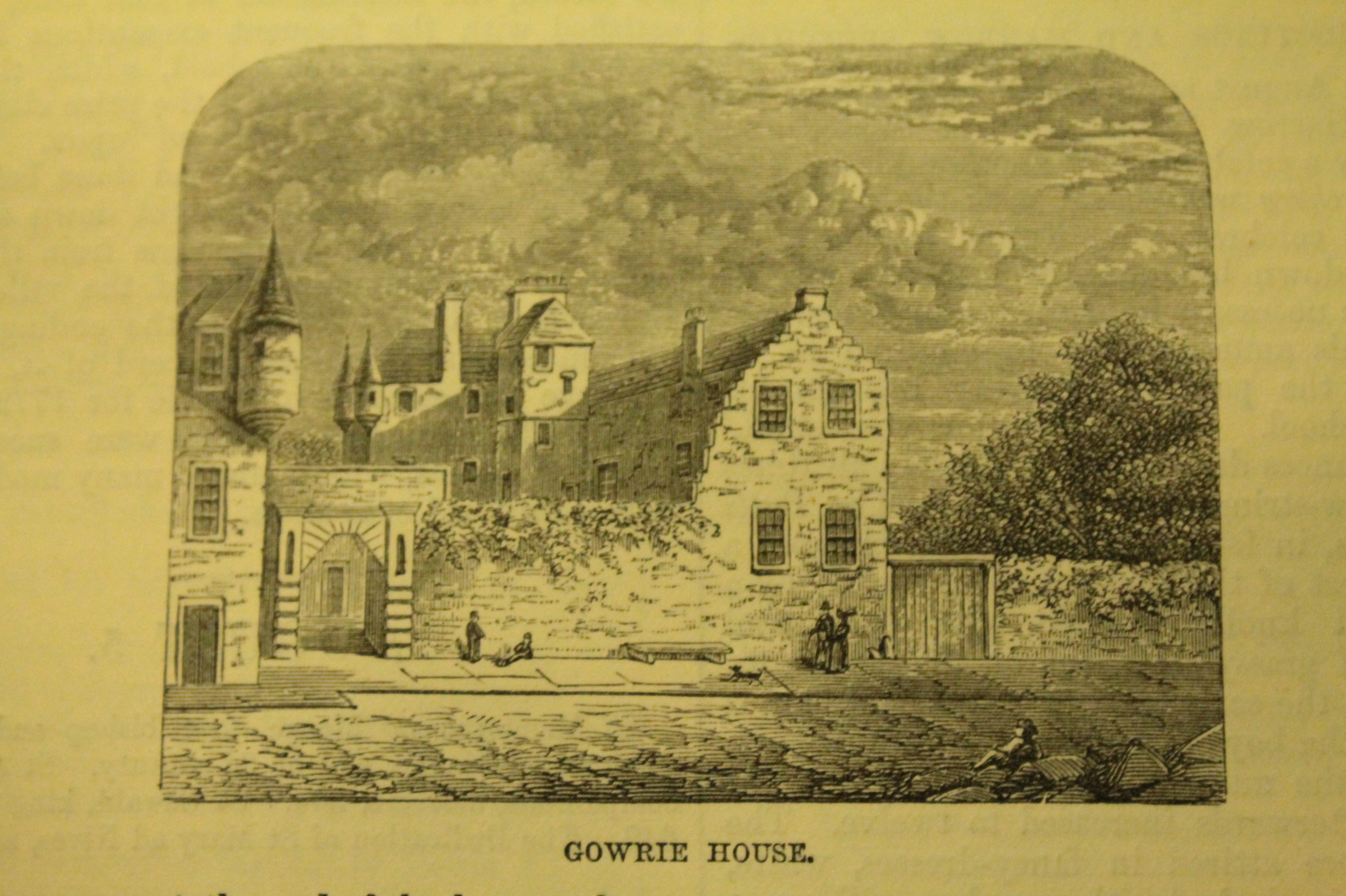|
Margaret Seton
Margaret Seton, Lady Paisley (died 1616) was a Scottish aristocrat, courtier and a favourite of Anne of Denmark. Family background She was a daughter of George Seton, 7th Lord Seton and Isobel Hamilton, a daughter of Sir William Hamilton of Sanquhar. A family group portrait by Frans Pourbus the Elder painted in 1572 has a French inscription, her father's advice to her, "My daughter, fear God and for your honour, since the honour of ladies is tender and delicate". She wears two bands of jewels and pearls in her auburn hair with a ruby and a sapphire as their centrepieces. Her necklace or carcanet has precious stones set in gold alternating with diamonds. The artist may have depicted actual family jewels. In July 1568 Regent Moray granted her the goods of a number of men from Tranent, Winton, Longniddry, Winchburgh, and elsewhere, all tenants and servants of her father. They were implicated in the escape of Mary, Queen of Scots from Lochleven Castle and supporting her at the batt ... [...More Info...] [...Related Items...] OR: [Wikipedia] [Google] [Baidu] |
Frans Pourbus The Elder
Frans Pourbus the ElderGaëlle Brackez, ''Frans Pourbus de oudere (1545-1581) Een blik op zijn leven en oeuvre volume i: tekst'', Masterproef voorgelegd aan de Faculteit Letteren en Wijsbegeerte, Vakgroep Kunst -, Muziek- en Theaterwetenschappen, voor het verkrijgen van de graad van Master, Universiteit Gent Academiejaar 2011 -2012 (Bruges, 1545 – Antwerp, 19 September 1581) was a Flemish Renaissance painter who is known primarily for his portraits and religious compositions, as well as a few genre scenes.Frans Pourbus the Elder, attributed to, ''Merry company'' at Lempertz He was the son of the prominent Bruges painter and |
Stirling Castle (6017718172)
Stirling Castle, located in Stirling, is one of the largest and most important castles in Scotland, both historically and architecturally. The castle sits atop Castle Hill, an intrusive crag, which forms part of the Stirling Sill geological formation. It is surrounded on three sides by steep cliffs, giving it a strong defensive position. Its strategic location, guarding what was, until the 1890s, the farthest downstream crossing of the River Forth, has made it an important fortification in the region from the earliest times. Most of the principal buildings of the castle date from the fifteenth and sixteenth centuries. A few structures remain from the fourteenth century, while the outer defences fronting the town date from the early eighteenth century. Before the union with England, Stirling Castle was also one of the most used of the many Scottish royal residences, very much a palace as well as a fortress. Several Scottish Kings and Queens have been crowned at Stirling, incl ... [...More Info...] [...Related Items...] OR: [Wikipedia] [Google] [Baidu] |
Michael Lynch (historian)
Michael Lynch, FRHistS, FRSE, FSA Scot (born 15 June 1946) is a retired Scottish historian and a leading expert in the history of the Scottish Reformation and pre-modern urbanisation in the Scottish kingdom. In 2010, five years after his retirement, he was described by one reviewer as 'one of the most influential historians in Scotland of the last thirty years', whose work has been characterised by an 'ability to bring ecclesiastical, cultural and urban perspectives to traditional Scottish political and governmental histories', as well as the ability 'to clarify a difficult theory within a deceptively simple phrase'. Lynch was born in Aberdeen.Biographical details in this paragraph summarise Lynch's entry in Frost's Scottish Who's Who He was educated at Aberdeen Grammar School before taking degrees at the University of Aberdeen and the University of London. His first academic post was a lectureship in the history department at University College, Bangor (now Bangor University) ... [...More Info...] [...Related Items...] OR: [Wikipedia] [Google] [Baidu] |
Julian Goodare
Julian Goodare is a professor of history at University of Edinburgh. Academic career Goodare studied at the University of Edinburgh in the 1980s, afterwards engaged as a postdoctoral fellow. He lectured at the University of Wales, and at the University of Sheffield. He returned to work at Edinburgh in 1998. He was the co-director of the Survey of Scottish Witchcraft alongside Louise Yeoman. In 2019, he called for a memorial to Scotland's tortured and executed witches. Goodare has published articles and book chapters on crown finance in the early modern period. Subjects include the administration known as the Octavians, and the annual sums of money which Elizabeth I gave James VI of Scotland, which he argues ought to be known as the English subsidy. He explored the significance of the " Ainslie Bond", made in support of the Earl of Bothwell, in the light of Jenny Wormald Jennifer "Jenny" Wormald HonFSA Scot (18 January 1942 – 9 December 2015) was a Scottish historian who st ... [...More Info...] [...Related Items...] OR: [Wikipedia] [Google] [Baidu] |
Maureen Meikle
Maureen M. Meikle is an academic historian. Her 1988 Phd thesis at the University of Edinburgh was titledLairds and gentlemen: A study of the landed families of the Eastern Anglo-Scottish Borders c.1540-1603. She is writing a new biography of Anne of Denmark. Like most recent historians she prefers "Anna" for the queen's forename. She was Senior Lecturer in History at the University of Sunderland, and appointed Head of Humanities at Leeds Trinity University in 2009.Maureen Meikle, ''The Scottish People, 1490-1625'' (Lulu, 2013), p. ix. Professor Emerita Maureen Meikle gave a public lecture,'Anna of Denmark as Queen of Scots, 1590-1603', at the Patrick Geddes Centre at Riddle's Court in Edinburgh on 30 October 2019. Selected publications 'Once a Dane, Always Always a Dane? Queen Anna of Denmark's Foreign Relations and Intercessions as a Queen Consort of Scotland and England, 1588-1619', Sara Ayres, ''The Court Historian'', 24:2 (August 2019), pp. 168-180*''The Scottish People, 14 ... [...More Info...] [...Related Items...] OR: [Wikipedia] [Google] [Baidu] |
Henry Frederick, Prince Of Wales
Henry Frederick, Prince of Wales (19 February 1594 – 6 November 1612), was the eldest son and heir apparent of James VI and I, King of England and Scotland; and his wife Anne of Denmark. His name derives from his grandfathers: Henry Stuart, Lord Darnley; and Frederick II of Denmark. Prince Henry was widely seen as a bright and promising heir to his father's thrones. However, at the age of 18, he predeceased his father when he died of typhoid fever. His younger brother Charles succeeded him as heir apparent to the English, Irish, and Scottish thrones. Early life Henry was born at Stirling Castle, Scotland, and became Duke of Rothesay, Earl of Carrick, Baron of Renfrew, Lord of the Isles, and Prince and Great Steward of Scotland automatically on his birth. His nurses included Mistress Primrose and Mistress Bruce. Henry's baptism on 30 August 1594 was celebrated with complex theatrical entertainments written by poet William Fowler and a ceremony in a new Chapel Royal ... [...More Info...] [...Related Items...] OR: [Wikipedia] [Google] [Baidu] |
Earl Of Orkney
Earl of Orkney, historically Jarl of Orkney, is a title of nobility encompassing the archipelagoes of Orkney and Shetland, which comprise the Northern Isles of Scotland. Originally founded by Norse invaders, the status of the rulers of the Northern Isles as Norwegian vassals was formalised in 1195. Although the Old Norse term ''jarl'' is etymologically related to "earl", and the jarls were succeeded by earls in the late 15th century, a Norwegian ''jarl'' is not the same thing. In the Norse context the distinction between jarls and kings did not become significant until the late 11th century and the early jarls would therefore have had considerable independence of action until that time. The position of Jarl of Orkney was eventually the most senior rank in medieval Norway except for the king himself. The jarls were periodically subject to the kings of Alba for those parts of their territory in what is now mainland Scotland (i.e. Caithness and Sutherland). In 1232, a Scottish dyna ... [...More Info...] [...Related Items...] OR: [Wikipedia] [Google] [Baidu] |
Stirling Castle
Stirling Castle, located in Stirling, is one of the largest and most important castles in Scotland, both historically and architecturally. The castle sits atop Castle Hill, an intrusive crag, which forms part of the Stirling Sill geological formation. It is surrounded on three sides by steep cliffs, giving it a strong defensive position. Its strategic location, guarding what was, until the 1890s, the farthest downstream crossing of the River Forth, has made it an important fortification in the region from the earliest times. Most of the principal buildings of the castle date from the fifteenth and sixteenth centuries. A few structures remain from the fourteenth century, while the outer defences fronting the town date from the early eighteenth century. Before the union with England, Stirling Castle was also one of the most used of the many Scottish royal residences, very much a palace as well as a fortress. Several Scottish Kings and Queens have been crowned at Stirling, in ... [...More Info...] [...Related Items...] OR: [Wikipedia] [Google] [Baidu] |
William Douglas, 10th Earl Of Angus
William Douglas, 10th Earl of Angus (15543 March 1611) was a Scottish nobleman. He was the son of William Douglas, 9th Earl of Angus (1533–1591). He was a direct descendant of King James I through his paternal grandmother, Agnes Keith, a daughter of William Keith, 3rd Earl Marischal. Career Douglas studied at St. Andrews University and joined the household of the Earl of Morton. Subsequently, while visiting the French court, he became a Catholic, and was in consequence, upon his return, disinherited and placed under restraint. Nevertheless, Douglas succeeded to his father's titles and estates in 1591, and though in 1592 he was disgraced for his complicity in Lord Bothwell's plot, he was soon liberated and performed useful services as the King's Lieutenant in the north of Scotland. In June 1592 he was injured falling from his horse while hunting with James VI and sent for drugs from the surgeon Gilbert Primrose. In July 1592 he asked for help from Queen Elizabeth in a ... [...More Info...] [...Related Items...] OR: [Wikipedia] [Google] [Baidu] |
Holyrood House
The Palace of Holyroodhouse ( or ), commonly referred to as Holyrood Palace or Holyroodhouse, is the official residence of the British monarch in Scotland. Located at the bottom of the Royal Mile in Edinburgh, at the opposite end to Edinburgh Castle, Holyroodhouse has served as the principal royal residence in Scotland since the 16th century, and is a setting for state occasions and official entertaining. The late Queen Elizabeth II spent one week in residence at Holyroodhouse at the beginning of each summer, where she carried out a range of official engagements and ceremonies. The 16th-century historic apartments of Mary, Queen of Scots, and the State Apartments, used for official and state entertaining, are open to the public throughout the year, except when members of the royal family are in residence. The Queen's Gallery was built at the western entrance to the Palace of Holyroodhouse and opened in 2002 to exhibit works of art from the Royal Collection. The gardens of the ... [...More Info...] [...Related Items...] OR: [Wikipedia] [Google] [Baidu] |
Gowrie Conspiracy
John Ruthven, 3rd Earl of Gowrie (c. 1577 – 5 August 1600), was a Scottish nobleman who died in mysterious circumstances, referred to as the "Gowrie Conspiracy", in which he and/or his brother Alexander were attempting to kill or kidnap King James VI of Scotland for unknown purposes. The king's retinue killed both brothers during the attack, and the king survived. Early life John Ruthven was the second son of William Ruthven, 1st Earl of Gowrie, and his wife Dorothea Stewart. His brother James, the 2nd Earl, died in 1586, therefore John succeeded his brother as the Earl of Gowrie while still a child. The Ruthven family had a history of treason. Like his father and grandfather before him, Ruthven attached himself to the party of the reforming preachers, who procured his election in 1592 as Provost of Perth, a post that was almost hereditary in the Ruthven family. He was educated at the grammar school of Perth and the University of Edinburgh, where he was in the summer of 15 ... [...More Info...] [...Related Items...] OR: [Wikipedia] [Google] [Baidu] |
Barbara Ruthven
Barbara Ruthven (died 1625) was a Scottish courtier and favourite of Anne of Denmark, expelled from court after the death of her brother. Barbara Ruthven was a daughter of William Ruthven, 1st Earl of Gowrie and Dorothea Stewart, the oldest daughter of Henry Stewart, 1st Lord Methven and Janet Stewart, daughter of John Stewart, 2nd Earl of Atholl. Career She was a maid of honour to Anne of Denmark with her sister Beatrix. Beatrix had a prominent role at the christening of Princess Elizabeth in November 1596, for which the queen bought her a gown of figured black velvet with white sleeves and a yellow damask skirt. Christene Ruthven, another gentlewoman listed in the queen's household may have been another sister. Their sister Elizabeth was married to Robert Gordon of Lochinvar. James Hudson noted Barbara having a secret conversation with the Scottish ambassador Robert Crichton, 8th Lord Crichton of Sanquhar in May 1597. Beatrix Ruthven was also a significant political figure a ... [...More Info...] [...Related Items...] OR: [Wikipedia] [Google] [Baidu] |








